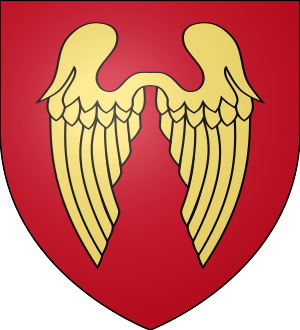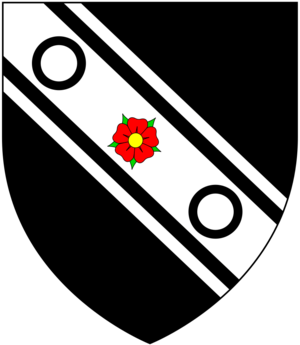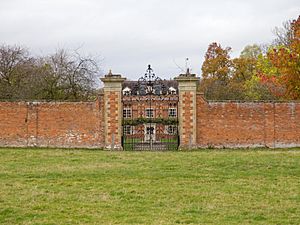Francis Seymour-Conway, 1st Baron Conway facts for kids
Quick facts for kids
Francis Seymour-Conway, 1st Baron Conway
|
|
|---|---|

Arms of Seymour (he was not entitled to use the arms of the special grant of the 1st Duke of Somerset): Gules, two wings conjoined in lure or
|
|
| Member of the English Parliament for Bramber |
|
| In office 1701–1703 Serving with
|
|
| Preceded by |
|
| Succeeded by |
|
| Personal details | |
| Born |
Francis Seymour
28 May 1679 |
| Died | 3 February 1732 (aged 52) Lisburn, Ireland |
| Political party | Tory |
| Children | |
| Parent |
|
Francis Seymour-Conway, 1st Baron Conway of Ragley, 1st Baron Conway of Killultagh (born 28 May 1679, died 3 February 1732), was an important British politician. He was a Member of Parliament (MP) and a member of the Irish Privy Council. He was born with the name Francis Seymour.
Contents
Who Was Francis Seymour-Conway?
Francis Seymour-Conway was born Francis Seymour. He was the second son of Sir Edward Seymour, 4th Baronet, and his second wife, Letitia Popham. His family, the Seymour family, had a long history. They were related to Edward Seymour, 1st Duke of Somerset, a very powerful person from an earlier time.
How He Got His Name
In 1699, Francis's older brother, Popham Seymour-Conway, passed away. Francis then inherited the lands and wealth of a relative on his mother's side, Edward Conway, 1st Earl of Conway. To honor this inheritance, Francis was given special permission to add "Conway" to his last name that same year. This is how he became Francis Seymour-Conway.
His Political Journey
Francis Seymour-Conway had a busy career in politics. He held several important positions.
Becoming a Member of Parliament
From 1701 to 1703, Conway was a Member of Parliament (MP) for a place called Bramber. An MP is a person elected to represent their area in the country's parliament, helping to make laws and decisions. He belonged to the Tory political party.
Becoming a Baron
In 1703, he was given a special noble title. He became Baron Conway of Ragley in England. A Baron is a member of the Peerage of England, which means they are part of the nobility and can sit in the House of Lords. Later, in 1712, he received another title, becoming Baron Conway of Killultagh in Ireland.
Other Important Roles
From 1728 to 1732, Lord Conway served as the Governor of Carrickfergus, a town in Ireland. In 1728, he also joined the Irish Privy Council. This was a group of important advisors to the monarch in Ireland.
His Family Life
Lord Conway married three times and had many children.
His First Marriage
On 17 February 1704, he married his first wife, Lady Mary Hyde. She was the daughter of Laurence Hyde, 1st Earl of Rochester. They had four daughters:
- Letitia Seymour-Conway (born 1704, died 1723)
- Mary Seymour-Conway (born 1705, died 1728), who married Nicholas Price
- Henrietta Seymour-Conway (born 1706, died 1771)
- Catherine Seymour-Conway (born 1708, died 1737)
Lady Mary passed away in 1709.
His Second Marriage
Later in 1709, he married Jane Bowden. They had two children:
- Edward Seymour-Conway (died 1710)
- Jane Seymour-Conway (died 1749)
Jane also passed away in 1716.
His Third Marriage
In July 1716, Lord Conway married his third wife, Charlotte Shorter. She was the daughter of John Shorter. They had several children, including two sons who became very famous:
- Francis Seymour-Conway, 1st Marquess of Hertford (1718–1794)
- Field Marshal Hon. Henry Seymour Conway (1721–1795)
- Charlotte Seymour-Conway (born and died 1717)
- George Augustus Seymour-Conway (born 1723), who died as a baby
- Arabella Seymour-Conway, who died young
- Anne Seymour-Conway (died 1774), who married John Harris
- Charles Seymour-Conway, who died young
Lord Conway passed away in February 1732 in Lisburn, Ireland, when he was 52 years old. His eldest son from his third marriage, Francis Seymour-Conway, inherited his titles. This son later became the Earl of Hertford and then the Marquess of Hertford. Lady Charlotte Conway, his third wife, died in 1734.



